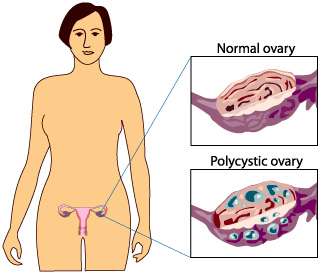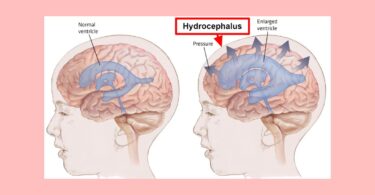A 29 year old female visited my clinic on Aug 9th, 2014 with the chief complaint of irregular periods for the last two years. It all began when she was 22 years old. She lost her grandfather whom she was very much attached to. That very month her periods got skipped. Later they became quite irregular, and for that they did gynaecological treatment. Unfortunately the treatment didn’t help and instead gave her increased body fat.
Her physical appearance was of typical feminine delicate looks. She was very particular about her answers, sometimes responding with only one word.
Mentals:
She was not very social, most of the time sitting in her balcony doing her hobby or studies. According to her mother, she was very moody, sometimes very cheerful, sometimes sulky and weeping for trifles. When attached to someone she just gets involved fully. She gives a hundred percent to whatever she is doing and is sincere in her all efforts.
Associated complaint- urticaria after having pastries.
Generals
Appetite – normal
Thirst – very little
Craving – fatty foods like pastries, oily food though it gives her urticaria
Stools – normal
Urine- frequent urine infection
Periods very much irregular
Menses before: lots of bloating and mental irritability ending in weeping.
Thermals were not so marked
Assessing The Case
Overall the striking problem was irregularities in menses and mood swings. These two issues seem related to hormonal ups and downs. She had suppressed menses after losing her loved one. That is suppressed menses from grief. The homeopathic remedy which has this pqrs symptom is Ignatia. If she had taken Ignatia at that time she might not have ended up with PCOD. Unfortunately she was treated with lots of oestrogen and progesterone compounds which ultimately landed her in insulin resistance and PCOD. After being treated many times with steroids she ended in a Pulsatilla state. If you go through her physical generals it will give you a complete picture of Pulsatilla. While treating her I went through her reports. I treated her based on the following case analysis:
- ailments from grief
- weeping disposition
- mood changeable
- aversion to talk, asks for nothing
- craving for things which disagree
- menses suppressed
- plump female, disposition to obesity
The first symptom of ailments from grief was pointing toward Ignatia, but the rest of the picture was of Pulsatilla. These physical generals were developed after taking hormonal treatment.
I decided to treat her first with Ignatia 200. I gave her one dose of Ignatia 200 and asked her to wait for one week. She reported on the fourth day saying she had got her periods. This time her periods were thick and a bit scanty. Dysmenorrhea was well marked. She was feeling cold while moving around. She was suffering with nasal discharge with thick yellow mucous.
I couldn’t think anything else but Pulsatilla 200. It gave her relief from dysmenorrhea. I kept her on Pulsatilla 200 tds . The next 3 periods she got after 45 days and it continued for 6-8 months. After 10 months her periods appeared on the 30th day and since then she has her regular menstruations of 30 days. Her sonography showed clear stromal tissue of both ovaries.
Dealing with PCOD

Causes of PCOD: the main cause of polycystic ovary disease is still unclear, however, there are many theories put forward:
- If a woman’s body develops insulin resistance, the ability to use insulin effectively gets damaged, and the pancreas has to secrete more insulin to make glucose available to the cells. It is believed that the excess insulin boosts androgen production by the ovaries.
- Eating certain foods can trigger an inflammatory response in some predisposed people. In such a scenario, the white blood cells of the woman’s body produce substances that may lead to insulin resistance and cholesterol accumulation. If other women in the family, as in mother or sisters have PCOD, there is a good chance that PCOD may develop.
Symptoms of PCOD: Depending on the degree of the hormonal imbalance, the symptoms of PCOD may vary in severity. The symptoms are:
- Irregular or missed periods
2. Excessive hair growth on the face, around the nipples, and/or around on the lower abdomen
3. Obesity
4. Thinning of the hair on the head
5. Persistent acne
6. Infertility
7. Type 2 diabetes or prediabetes
Apart from dietary restrictions and improvement in life style, homeopathic medicines often make wonder cures for PCOD.
Role of Nutrition in PCOD
It has been shown that improving baseline nutrition and losing weight (if needed) can do a lot to improve both the symptoms and the underlying disorder. Focusing on a higher protein and lower carbohydrate nutrition profile is important. Making primarily plant-based food choices and changing eating patterns to regular small meals with healthy snacks between can re-establish a balanced blood sugar and hormonal response leading to improved fertility. Important Changes – Reduce sweets and sweeteners. Eliminate candy, ice cream, desserts and pastries. Read ingredients on every label. Foods ending in -ol or -ose (glucose, dextrose, lactose, mannitol, xylitol, sorbitol etc) should be avoided. Also eliminate “diet” and “sugar free” foods made with Splenda, Aspartame and Saccharin as these are toxic chemicals. Stevia is a natural sweetener that can be used freely. Small amounts of raw honey and maple syrup could be good replacement. Eliminate processed grain products. Avoid pasta, crackers, breads, white rice, and all other processed flour products. Potatoes are also best eliminated as their starch is converted to sugar very quickly in the body. Reduce unhealthy fats. Eliminate packaged baked goods, deep fried foods, high fat dairy products like cream and sour cream and margarine. Switch from balsamic vinegar to apple cider vinegar, umeboshi vinegar, or use lemon/lime juice instead of vinegars. Have balsamic vinegar occasionally, as it is high in sugar.
General Suggestions: Start your day with the juice of 1/4 a lemon in hot or cold water to get your digestion started. Consider juicing beets, carrots, apples and kale.
Limit dairy to 4 times a week. Eliminate all dried fruits. Sour apples, crisp pears, grapefruit and all berries are alright in moderation. Eliminate all processed juices, or only have occasionally as a treat. Fresh vegetable juices are better. Tropical sweet fruits such as mango, banana, papaya and pineapple are too sweet as are most melons. Ensure adequate good quality protein. Eat more protein in the early part of your day to keep your blood sugar steady and energy up. Include vegetarian proteins even if you eat meat. Good vegetarian choices are raw seeds and nuts, quinoa, avocado, tofu and other soy products, chickpeas, black beans, lentils and all other beans.
If you are not vegetarian, include coldwater fish 2-3 times per week, such as sardines, sole, haddock, flounder, herring, or salmon (wild or organic.) whereas Swordfish, shark, king mackerel, halibut, sea bass or tuna can only be eaten once every 2 weeks as they may contain high levels of mercury. Organic turkey, organic chicken, and organic eggs 2-3 times a week (6 eggs per week maximum.) Avoid low quality “commercial” poultry as it is a source of exogenous hormones and chemicals. Soy products: Tofu, tempeh and edamame soybeans are good sources of protein. Choose unsweetened, organic non-GMO soy milk (or an alternative milk.) Use soy meat substitutes only occasionally (hot dogs, veggie meats, ground round, veggie burgers.)
Eat at least one portion of dark leafy greens and one yellow-orange fruit or vegetable every single day. This includes kale, chard, dandelion, bok choy, beet greens, collards, spinach, watercress, arugula and squashes, sweet potato, peppers, carrots, apricots, peaches/nectarines
Reduce alcohol, Ibuprofin, caffeine and Tylenol.
Optimal Habits– Make breakfast. Avoid the usual quick bagel or wadapaav or Maggie sort of instant foods and coffee, and eat a cooked, warm breakfast that includes some fruit or vegetable and protein. Eat substantial snacks and eliminate chips, bready treats, sugar, coffees and pop. Don’t go hungry: Eat every 2-4 hours. Getting over-hungry leads to poor food choices and wreaks havoc with insulin control. Start with breakfast and schedule small snacks between moderate meals for best blood sugar regulation.
Focus more on whole foods and good quality proteins than on the restrictions. Fat does not need to be restricted per say, but eliminating saturated and trans fats in the form of processed “treats” will naturally provide a lower fat diet. Do not choose “low fat” salad dressings or other options as these tend to be high in sugars. Read labels, read labels read labels! And, be nice to yourself – there will be easy days and hard days. A little compassion towards self goes a long way, and may be the best medicine!



